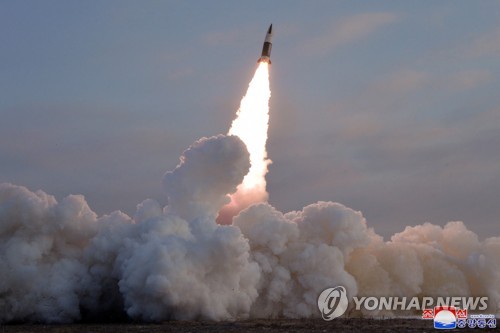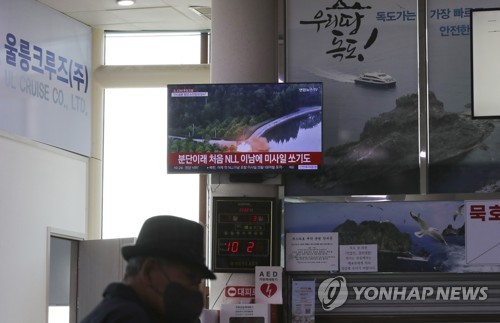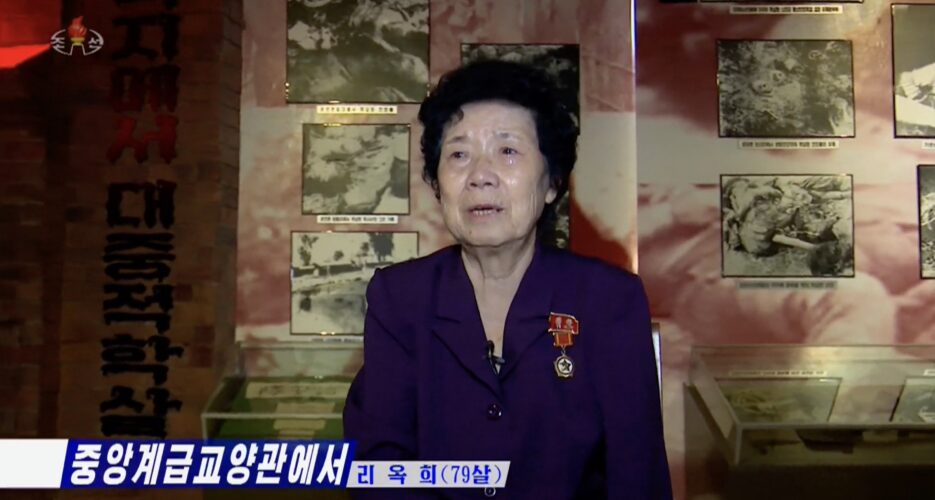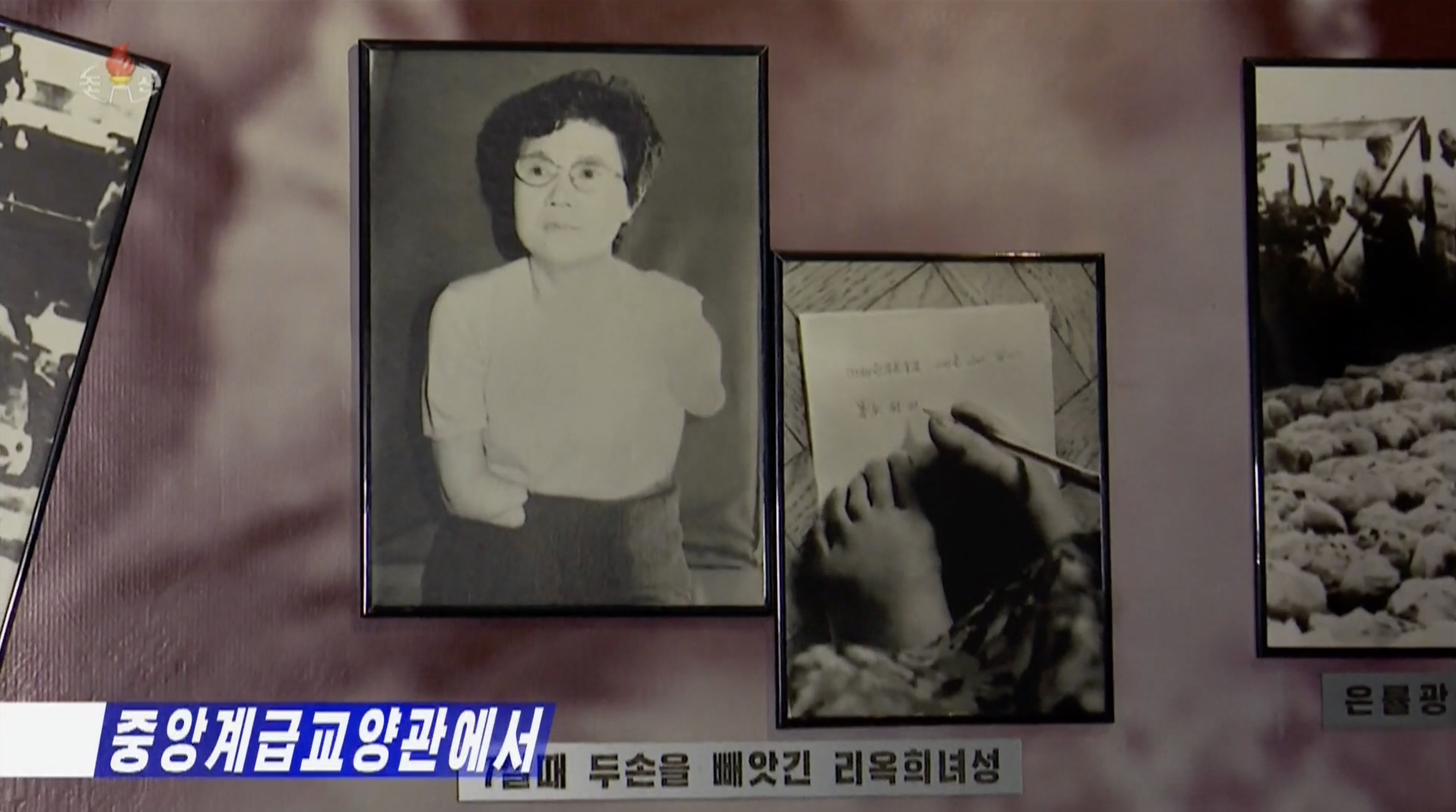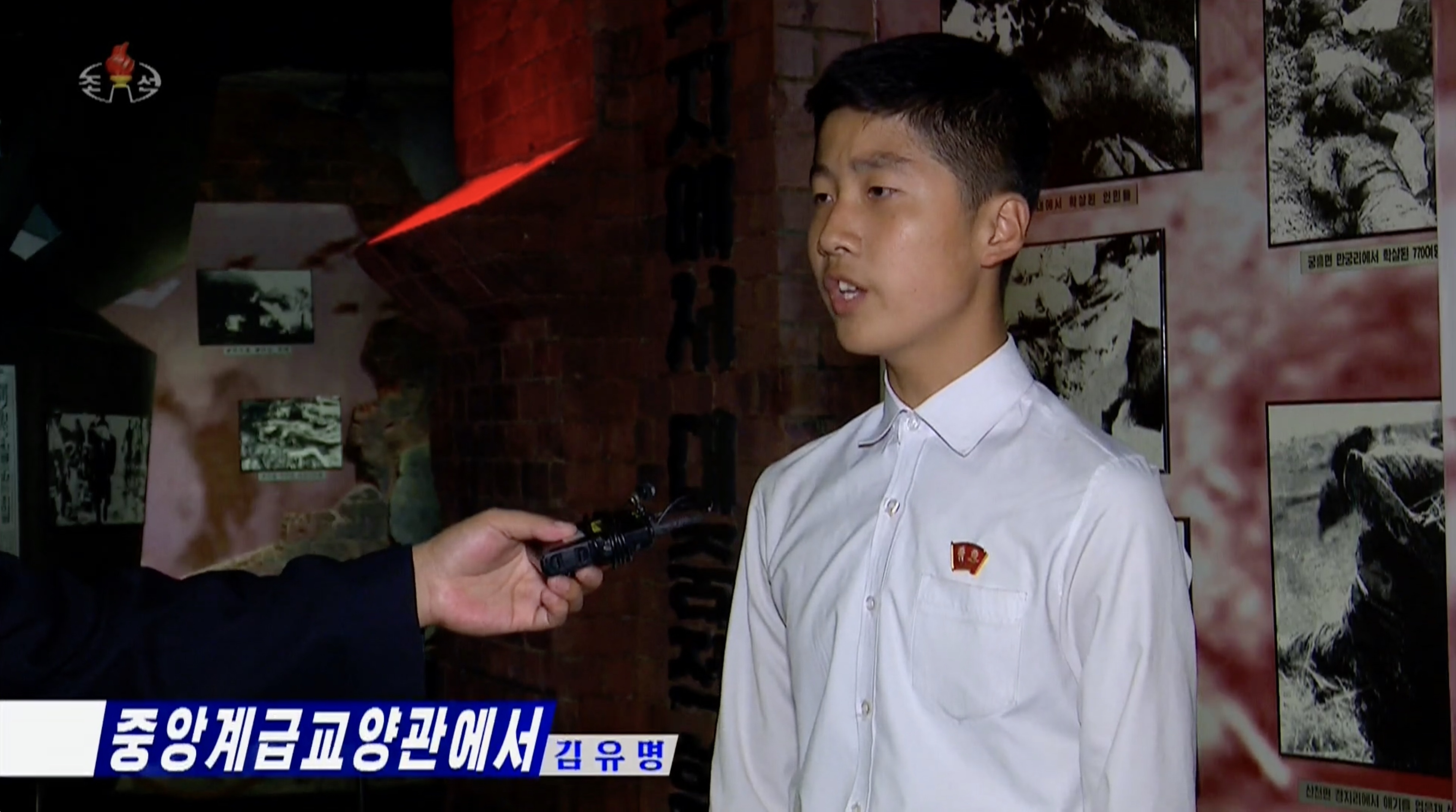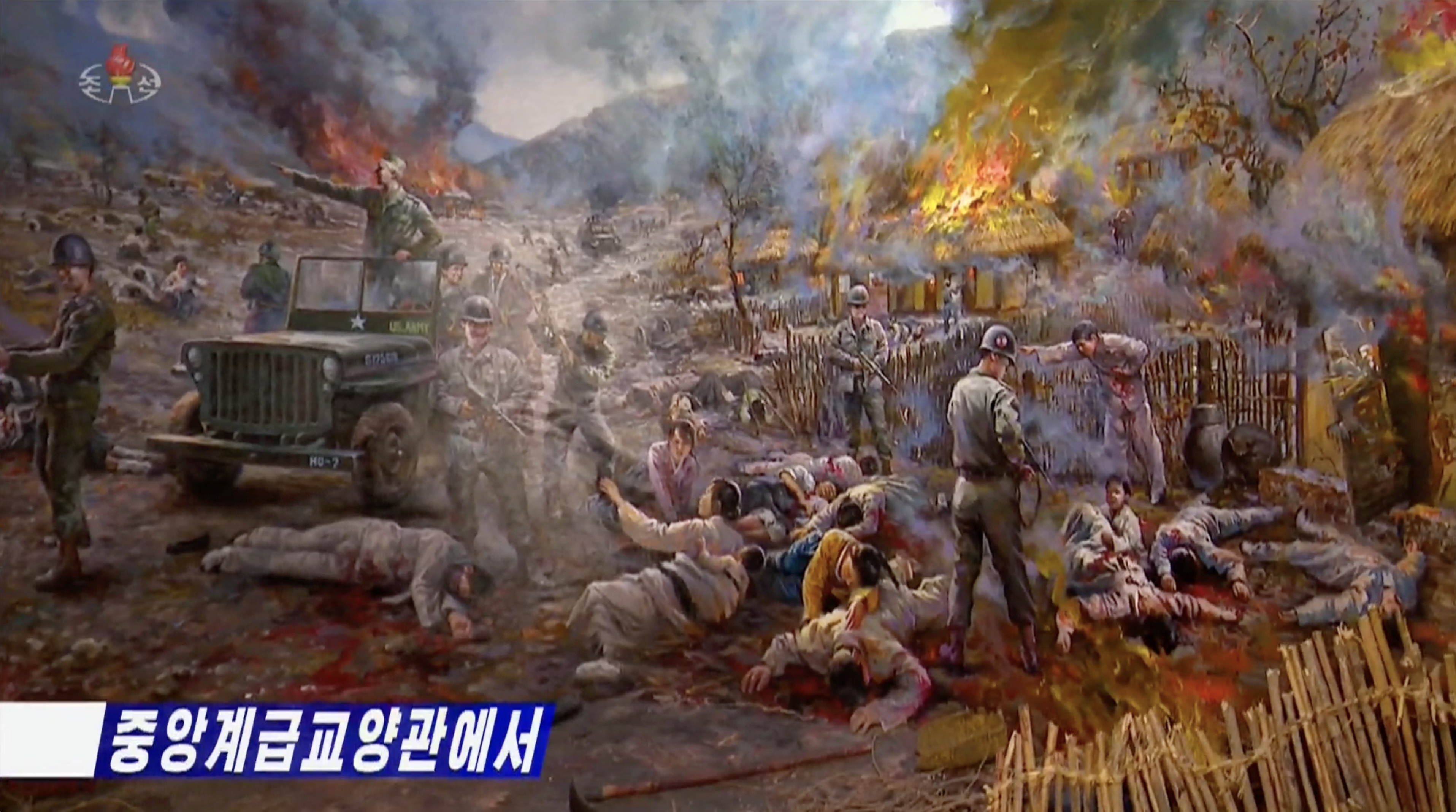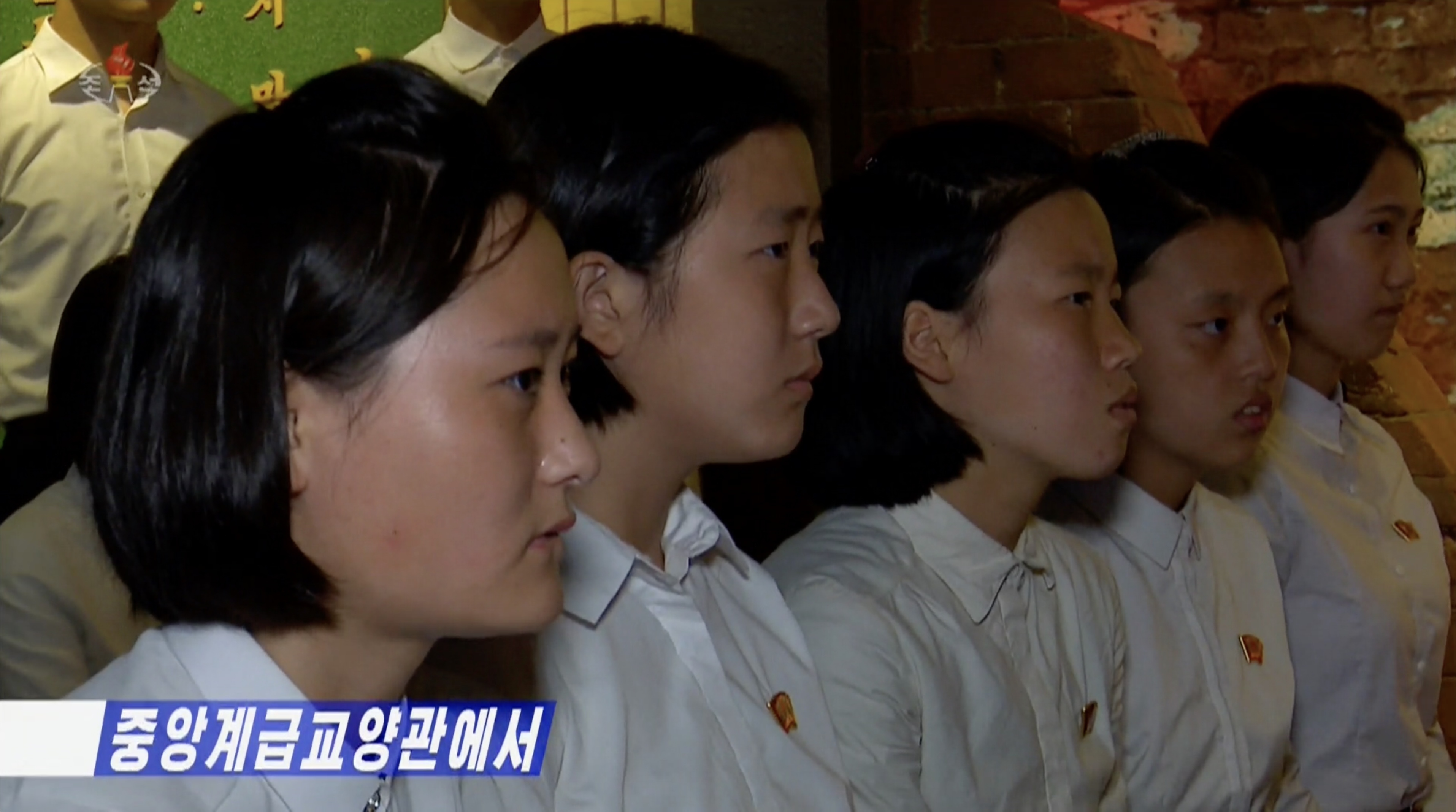
https://therealnews.com/biden-needs-to-accept-that-the-us-cant-intimidate-north-korea?fbclid=IwAR2bWE-uFRFy29KciP0hSipkNM0wuxNa9mdZ0LG39PEHa89K96SRFrOTC6E
BIDEN NEEDS TO ACCEPT THAT THE US CAN’T INTIMIDATE NORTH KOREA
A flurry of North Korean missile tests has captured international attention, but a longer view of US military threats and diplomatic obstinacy is missing from the picture.
BY JU-HYUN PARK NOVEMBER 16, 2022
An increasingly tense standoff has been simmering on the Korean Peninsula for months, and is now escalating to a potentially “uncontrollable phase,” North Korean officials warn. Since August, the US and South Korea have conducted five major joint military exercises and numerous smaller ones—the most recent of which, Vigilant Storm, just concluded on Nov. 5 and involved over 240 military aircraft in the largest ever aerial drills the countries have conducted together.
Denuclearization may be off the table, but the possibility remains for dialogue on normalization and security, including a negotiated end to the Korean War.
In the same time frame, North Korea has conducted several rounds of weapons tests involving dozens of ballistic missiles. The largest of these occurred on Nov. 2 in response to the impending Vigilant Storm exercises and reportedly involved 23 missiles, two of which landed off the east coast of South Korea, and one of which landed in waters south of the Northern Limit line, a maritime buffer zone in the Yellow Sea. This is the first time North Korean missiles have landed in waters delineated as South Korean.
Other military exchanges have also occurred on a near-daily basis over the past two months. Barrages of US and South Korean missiles have been launched, usually without notice from Western media; hundreds of North Korean artillery rounds have been fired in military demonstrations; and both South and North Korean shows of force have occurred along the Demilitarized Zone and the Northern Limit Line.
While similar saber-rattling has certainly occurred in Korea in the past, the frequency and intensity of these military exercises in recent weeks are part of a dangerous game of escalation that has no off-ramp. The US has no diplomatic relations with North Korea, meaning the two states lack an official channel through which they could cooperate to de-escalate the situation. This is particularly worrying as recent military exchanges at the Northern Limit Line threaten to upend the 2018 inter-Korean military agreement, which has, until recently, kept the peace in disputed maritime areas.
The Biden administration seems determined to outmuscle North Korea, but the assumption that North Korea can, will, or should be intimidated through military force is as risky as it is outrageous. North Korea is taking unprecedented and bold steps to not only deter, but even to limit US military actions. This is indicative of a new DPRK strategy for dealing with Washington—one that Pyongyang itself has proclaimed and is currently being borne out in the escalating military struggle in Korea. Even if the two sides manage to avoid a clash now, they cannot avoid it forever, unless the US radically changes its approach to Korea.
In declaring itself a nuclear state, North Korea is seeking to internationally legitimize its nuclear weapons program as part of its sovereign right to self-defense. The self-imposed ban on sharing nuclear weapons technology with other countries is a step towards demonstrating responsibility for non-proliferation. This, crucially, means North Korea has now closed the door to negotiations with the US about its nuclear programs, marking the end of an era in relations between the two countries.
The crisis that has been unfolding since August began with the decision of the US and South Korea to proceed with the Ulchi Freedom Shield military exercises—a massive combined drill conducted throughout South Korea, including sites within just a few miles of the DMZ. Even in the year prior to Ulchi Freedom Shield, however, the situation in Korea had already deteriorated significantly. Weapons tests on the Korean peninsula reached a record high earlier this spring due to an arms race between the two Korean states that began in 2021. Yet from June to August 2022, no major North Korean military activities occurred. Ulchi Freedom Shield broke this pause, and also triggered a crucial shift in North Korean nuclear policy.
On Sept. 9, the Supreme People’s Assembly of the Democratic People’s Republic of Korea (North Korea’s official name) passed a new law codifying the country’s status as a nuclear state. This new legislation includes provisions that (1) prevent North Korea from engaging in negotiations regarding its nuclear program for the foreseeable future, (2) bar the sharing of nuclear technology, and (3) establish the legal conditions under which a preemptive nuclear strike may be authorized. In a speech the following day, President of the State Affairs Committee Kim Jong Un declared, “We have drawn the line of no retreat regarding our nuclear weapons so that there will be no longer any bargaining over them.”
This new law marks a significant departure from previous North Korean policy. Despite testing its first nuclear weapons in 2006, North Korea has never had a first-strike nuclear policy. In fact, its government did not even establish legal conditions for the use of nuclear weapons in any situation until 2013. This dimension of the new legislation can be understood as a response to South Korea’s “Kill Chain” doctrine—a military strategy promoted by recently elected far-right President Yoon Seok-Yeol, which enshrines the use of preemptive strikes against North Korea.
While most mainstream media outlets have emphasized the preemptive strike provisions of North Korea’s new law, its real significance arguably lies elsewhere. In declaring itself a nuclear state, North Korea is seeking to internationally legitimize its nuclear weapons program as part of its sovereign right to self-defense. The self-imposed ban on sharing nuclear weapons technology with other countries is a step towards demonstrating responsibility for non-proliferation. This, crucially, means North Korea has now closed the door to negotiations with the US about its nuclear programs, marking the end of an era in relations between the two countries.
 Two US B-1B Lancer strategic bombers, four South Korean Air Force F-35 fighter jets and four U.S. Air Force F-16 fighter jets flying over South Korea during the “Vigilant Storm” joint air drill on Nov. 5, 2022, at an undisclosed location in South Korea. South Korean Defense Ministry via Getty Images
Two US B-1B Lancer strategic bombers, four South Korean Air Force F-35 fighter jets and four U.S. Air Force F-16 fighter jets flying over South Korea during the “Vigilant Storm” joint air drill on Nov. 5, 2022, at an undisclosed location in South Korea. South Korean Defense Ministry via Getty ImagesTHE US’S FAILED STRONG-ARM APPROACH TO NEGOTIATIONS
For over 30 years, negotiations concerning North Korea’s evolving nuclear programs have helped diffuse escalating tensions with the US on the peninsula. Until now, North Korea has been willing to bargain in exchange for normalization of relations and security guarantees. In 1994, a deal known as the Agreed Framework was reached based on such an arrangement. Pyongyang would dismantle its nuclear reactors in exchange for safer light-water reactors from the US, and the two countries would eventually establish formal diplomatic ties. The Agreed Framework fell apart because the US never provided the promised technology.
When Kim Jong Un and Donald Trump met in Hanoi in 2019, a US reporter asked Kim if he would be willing to dismantle North Korea’s nuclear weapons. Kim responded, “If I [wasn’t] willing to do that, I wouldn’t be here right now.” At that point, North Korea was chiefly concerned with lifting comprehensive US sanctions that had placed its economy in a stranglehold. It also needed the cooperation of the US in order to realize the goals of the 2018 Panmunjom Declaration, a jointly agreed and signed North and South Korean roadmap for reconciliation and eventual reunification premised on ending the Korean War, which has never been formally concluded by a peace treaty. Instead of offering any leeway on these matters, Trump’s proposal to Kim in Hanoi stated that the US would offer nothing until North Korea dismantled all of its nuclear weapons, material, and facilities. In response, Kim and the North Korean delegation walked out of the summit.
As relations with the US deteriorated towards the end of the Trump administration, North Korea’s Foreign Affairs Minister Ri Son Gwon remarked, “In retrospect, all the practices of the present US administration so far are nothing but accumulating its political achievements. Never again will we provide the US chief executive with another package to be used for achievements without receiving any returns.”
The failure of the US to seriously engage in previous negotiations with North Korea has directly contributed to the latter’s recent policy changes, including formally establishing itself as a nuclear state. As relations with the US deteriorated towards the end of the Trump administration, North Korea’s Foreign Affairs Minister Ri Son Gwon remarked, “In retrospect, all the practices of the present US administration so far are nothing but accumulating its political achievements. Never again will we provide the US chief executive with another package to be used for achievements without receiving any returns.”
Washington’s conceit that it can disarm North Korea without a fight—or without making concessions—has brought us to this juncture. However, it’s important to stress that this does not mean a future diplomatic resolution is impossible. Denuclearization may be off the table, but the possibility remains for dialogue on normalization and security, including a negotiated end to the Korean War.
That being said, judging by the situation on the ground, a resumption of dialogue shouldn’t be expected any time soon. North Korea’s change in policy has been accompanied by a noticeable shift in the calculus guiding its military decisions. In the past, North Korea was more cautious about testing US resolve. Lately, North Korea has matched the US military’s shows of force, and in the process taken unprecedented steps. With the opportunity for diplomacy significantly reduced, North Korea is pursuing a policy of expanding deterrence against the US. While it is a common practice in Western media to ascribe a kind of ontological irrationality to North Korea, this kind of approach is as foolish as it is racist, because it ultimately only obscures reality. North Korea is sending a clear message to the US that it will no longer accept its freewheeling military behavior. Failing to take heed of these warnings will only push the region, and possibly the entire planet, closer to a catastrophic clash.
 A woman walks past a television screen showing a news broadcast with file footage of a North Korean missile test, at a railway station in Seoul on Nov. 3, 2022. Jung Yeon-je/AFP via Getty Images
A woman walks past a television screen showing a news broadcast with file footage of a North Korean missile test, at a railway station in Seoul on Nov. 3, 2022. Jung Yeon-je/AFP via Getty ImagesA NEW ERA OF DETERRENCE
Both Washington and Seoul condemned North Korea’s new law enshrining its nuclear status and warned of an “overwhelming, decisive response” should North Korea conduct another nuclear test. On Sept. 18, The New York Times quoted South Korean President Yoon saying his government and the Biden administration were prepared to deploy “a package of all possible means and methods” to deter North Korea, including recourse to nuclear weapons. On Sept. 23, the US escalated the situation further by deploying the nuclear aircraft carrier USS Ronald Reagan to Busan for unannounced joint military exercises with the South Korean navy. This move provoked a flurry of missile tests from North Korea, including an intermediate-range ballistic missile that flew over Japan.
On Oct. 7, the Ronald Reagan returned to the East Sea1 for another round of surprise naval drills—this time including military vessels from Korea and Japan. This only exacerbated the situation, prompting even more military activity from the north and corresponding weapons tests from the south. In the second half of October, South Korea conducted its annual Hoguk military exercises with the participation of US troops, practicing an amphibious invasion of North Korea. The massive Vigilant Storm aerial exercises began shortly after the conclusion of the Hoguk exercises on Oct. 28. Like Ulchi Freedom Shield, each of these exercises was preceded by stern warnings from North Korea that were ultimately disregarded by the US and South Korea.
Prior to these incidents, North Korea had never before conducted missile tests with a US aircraft carrier present in Korean waters. In the past, similar maneuvers from the US would be principally met with fiery rhetoric; now, North Korea is responding with unprecedented military measures that signal a more aggressive approach to deterrence. Last week’s record barrage of North Korean missile tests drove this point home. A number of these missiles landed in waters off the southern part of the peninsula for the first time, and Pyongyang later clarified that the tests were intended to rehearse strikes against key South Korean and US military targets.
For Washington, deterrence means preventing North Korea from threatening the archipelago of overseas US military bases that stretches across East Asia and the Pacific. South Korea is the tip of a trans-Pacific spear pointed at the heart of China, now openly identified as the US’s chief rival. In other words, what is at stake for the US is its military hegemony in the region, which it needs to secure preferential “free market” arrangements in Asia.
These moves are about more than North Korea flexing its muscles—in upping the ante, Pyongyang is raising the risks incurred by Washington and Seoul should they engage in continued provocations. US military leaders and their South Korean counterparts have been careful to appear unfazed, but recently released documents from the Department of Defense offer some insight into how Washington is taking note of North Korea’s increasingly bold displays. The 2022 Missile Defense Review, released at the end of October, identifies North Korea as an “increasing risk to the U.S. homeland and U.S. forces in the theater,” while the complementary Nuclear Posture Review acknowledged North Korean military activity as a “deterrence dilemma” and “a persistent threat and growing danger.” The latter document also included a warning that “any nuclear attack by North Korea against the United States or its Allies and partners is unacceptable and will result in the end of that regime.”
As these and other official documents demonstrate, the US nominally views its military activity through the same framework of deterrence as North Korea does, yet there is an unevenness here that must be contended with. For Washington, deterrence means preventing North Korea from threatening the archipelago of overseas US military bases that stretches across East Asia and the Pacific. South Korea is a strategic pillar of this network of overseas bases—US troops have never withdrawn from Korea since the 1953 armistice, and 28,500 soldiers remain stationed there to this day. With an additional 50,000 US troops in Japan, and aerial and naval bases stretching from Guam to Hawai’i, South Korea is the tip of a trans-Pacific spear pointed at the heart of China, now openly identified as the US’s chief rival. In other words, what is at stake for the US is its military hegemony in the region, which it needs to secure preferential “free market” arrangements in Asia.
In contrast, North Korea is fighting for its survival against what has been, historically and presently, an existential threat. During the Korean War, the US dropped 635,000 tons of bombs and 32,557 tons of napalm on North Korea. By 1953, out of the 4 to 5 million Koreans who had been killed during the war, over 2 million people were killed in North Korea. After Hiroshima and Nagasaki, the shadow of nuclear annihilation loomed large over the hostilities, and remained for decades after—long before North Korea was even close to acquiring nuclear weapons. General MacArthur, the Joint Chiefs of Staff, and Presidents Truman and Eisenhower all threatened to use the atomic bomb with varying degrees of premeditation. From 1958-1991, the US stationed hundreds of nuclear weapons in South Korea, aimed at North Korea as well as China and the USSR. To this day, South Korea remains officially under the US nuclear umbrella, meaning the US will deploy nukes for its defense; North Korea has never had a comparable arrangement with another power.
This history rarely figures into US accounts of the conflict in Korea, and it does much to explain North Korean actions. For the past 72 years, North Korea has been dedicated to ensuring the survival of its people. With the door to diplomacy seemingly closed by US intransigence, Pyongyang is now opting to place even more emphasis on its capacity to conventionally deter US aggression.
 Thousands of candlelight action members, civic groups, and Seoul citizens hold a rally in front of the Seoul Finance Center to urge President Yoon Suk-yeol to resign and his spouse Kim Gun-hee to run a special prosecutor investigation on Oct. 29, 2022, in Seoul, South Korea. Chris Jung/NurPhoto via Getty Images
Thousands of candlelight action members, civic groups, and Seoul citizens hold a rally in front of the Seoul Finance Center to urge President Yoon Suk-yeol to resign and his spouse Kim Gun-hee to run a special prosecutor investigation on Oct. 29, 2022, in Seoul, South Korea. Chris Jung/NurPhoto via Getty ImagesWHAT NOW?
After the most recent North Korean missile launch on Nov. 9, one State Department official claimed, “We continue to seek serious and sustained dialogue with the DPRK, but the DPRK refuses to engage.” Taken in view of the longer history of US-North Korea relations, this is an incredibly self-serving statement. A closer look at the aforementioned 2022 Nuclear Posture Review recently released by the Department of Defense offers some insight into why US claims to openness have failed to bear fruit: “With respect to reducing or eliminating the threat from North Korea, our goal remains the complete and verifiable denuclearization of the Korean Peninsula.” Any mention of a peaceful resolution to the Korean War or normalization of relations with North Korea is notably absent from this position. The problem for the US is not the absence of a just peace, but North Korea’s capacity for deterrence in a situation of unfinished war. With this in mind, North Korea’s unwillingness to engage in negotiations at this time makes sense in the context of its own interests and historical logic. After all, what Biden is offering is ultimately no different than what Trump did: a demand for surrender, rather than a commitment to detente.
The current conflict may not boil over into open warfare, but that risk will only increase so long as the status quo in Korea set in 1953 continues to hold. The US has always had the option to de-escalate in Korea, and that possibility remains open today. The catch is that Washington must actually treat negotiations as negotiations, rather than as a shakedown. That will have to entail making concessions that were previously unimaginable: recognition of North Korea’s nuclear status, an end to US sanctions, full normalization of relations, a peace treaty to end the Korean War, and an eventual full military withdrawal from the peninsula. These are the only solutions that accord with the reality of the situation—North Korea has become a nuclear state to protect itself from constant US threats, and until those threats are fully removed they will remain a barrier to transforming the status quo of division and hostility in Korea.
These measures might alarm those who still cling to the idea that the US is defending democracy in Korea. If the democratic will of the Korean people is of such concern, it ought to be noted that the policies of current South Korean President Yoon, including his approach to North Korea, are widely unpopular. Thousands of people mobilized in August to protest the resumption of US-South Korean military exercises. Opposition was so extreme that it actually managed to unite South Korea’s rival trade unions; even more surprisingly, those unions stood in solidarity with the North Korean General Federation of Trade Unions. Support for North Korea is still a crime in South Korea, and it cannot be understated what an incredible risk these union leaders took in making a stand for peace. Since August, the movement calling for Yoon’s resignation has only grown, and is now being magnified even more as his administration’s bungled response to the tragic Itaewon disaster, which claimed 158 lives, continues to inflame passions.
There is no standard of ethics or democracy by which the US can continue to defend its position vis-a-vis North Korea. The ongoing Korean War is not only a threat to regional security and the lives of millions of people, it is also a deep scar on the psyche of the Korean nation. Countless families were separated by the war, enduring for generations the pain of national division in the most intimate terms possible. The constant threat of renewed war has deeply shaped the politics of both Korean states, and made the peninsula one of the most militarized places on earth for the better part of a century. Previous South Korean governments have demonstrated a willingness to move forward with North Korea, yet the US has stuck to its narrow interests, hiding behind a narrative of “national security” that conveniently belies the historical fact that it was the US that traveled thousands of miles searching for this fight. Until and unless the Biden administration reframes its goals towards removing itself as an obstacle to Korean peace, anything it says about openness to dialogue should be disregarded.
1 The waters between Japan and Korea are subject to a longstanding naming dispute. The name “East Sea” refers to the same body of water as the “Sea of Japan.”





 문성희 박사(사진 제공:문성희)문성희 네, 유엔인구기금의 보고서에 따르면 북한의 합계출산율은 1.9명으로 집계됐다고 하네요. 이는 말씀하신데로 북한 여성 1명이 평생 자녀를 채 2명도 낳지 않는다는 것을 뜻합니다. 인구 유지를 위해 필요한 합계출산율이 2.1명에도 도달하지 못하고 있습니다. 유엔인구기금 보고서에 따르면 전 세계 합계출산율이 2.4명, 특히 최빈개발도상국의 출산율이 3.8명이기때문에 그것보다도 한참 낮은 숫자이지요. 2020년부터 2025년까지 북한 인구 증가율은 연평균 0.4%에 그칠 것으로 추산된다고 하네요. 정말 심각하다고 생각합니다.
문성희 박사(사진 제공:문성희)문성희 네, 유엔인구기금의 보고서에 따르면 북한의 합계출산율은 1.9명으로 집계됐다고 하네요. 이는 말씀하신데로 북한 여성 1명이 평생 자녀를 채 2명도 낳지 않는다는 것을 뜻합니다. 인구 유지를 위해 필요한 합계출산율이 2.1명에도 도달하지 못하고 있습니다. 유엔인구기금 보고서에 따르면 전 세계 합계출산율이 2.4명, 특히 최빈개발도상국의 출산율이 3.8명이기때문에 그것보다도 한참 낮은 숫자이지요. 2020년부터 2025년까지 북한 인구 증가율은 연평균 0.4%에 그칠 것으로 추산된다고 하네요. 정말 심각하다고 생각합니다. 평양 외곽의 한 유치원에서 어린이들이 놀고 있다.
평양 외곽의 한 유치원에서 어린이들이 놀고 있다.